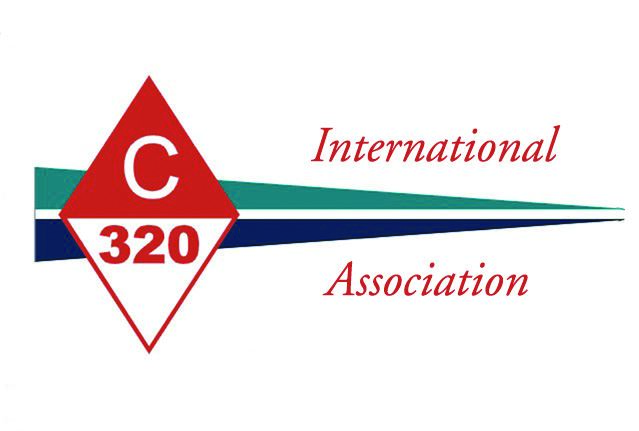The color and quantity of exhaust smoke tells a great deal about the condition of a marine diesel engine. All marine engines create smoke to some extent, but if the diesel engine is in good condition, the quantity will almost be invisible. Defects that affect the fuel, breathing or compression will prevent correct combustion and lead to excessive exhaust smoke.
The following analysis comes from U.S. Master Marine Surveyor Rob Scanlan and is presented courtesy of RCR Yachts.
Key-numbers as to how likely the problem:
[1]-Very Common.
[2]-Common.
[3]-Possible.
[4]-Rare.
[5]-Very Rare
Black Smoke is caused by partially burned fuel. When the fuel/air mixture increases there is insufficient oxygen present in the cylinders to complete the combustion process. Large quantities of carbon are then produced which appear from the exhaust as minute black soot particles. Engines with turbochargers have additional sources of black smoke.
Black Smoke Insufficient Air:
Causes: Air intake filter clogged [2] – Air intake restricted [3] – Exhaust restricted [3] – Leaking inlet or exhaust valves [4] – Poor engine room ventilation [4]
Causes: Air intake filter clogged [2] – Air intake restricted [3] – Exhaust restricted [3] – Leaking inlet or exhaust valves [4] – Poor engine room ventilation [4]
Black Smoke Excessive Fuel:
Causes: Defective injector(s) [1] – Incorrect injector nozzle [3] – Injector pump incorrectly set [4] – Low fuel grade [4]
Causes: Defective injector(s) [1] – Incorrect injector nozzle [3] – Injector pump incorrectly set [4] – Low fuel grade [4]
Black Smoke Engine Overload: As load increases the governor senses the slight decrease in RPM and adjusts the injector pump to deliver more fuel. If the engine becomes overloaded then the increase in fuel does not increase RPM and no extra air is being sucked into the cylinders. Net result – soot:
Causes: Boat bottom dirty [1] – Propeller dirty/fouled [1] – Engine alignment incorrect [2] – Propeller incorrect [3] – Transmission incorrect ratio [3]
Causes: Boat bottom dirty [1] – Propeller dirty/fouled [1] – Engine alignment incorrect [2] – Propeller incorrect [3] – Transmission incorrect ratio [3]
Blue Smoke:
More accurately the smoke will appear white with a hint of blue. It often takes a trained eye to differentiate. Blue smoke is caused by oil burning in the combustion chamber or hot exhaust system. Engines that have turbochargers have additional sources of blue smoke:
Causes: High crankcase pressure [3] – Piston rings / cylinders worn [3] – Valve guides worn [3] – Valve seals defective [3] – Oil leaking into the intake from defective gaskets [4]
Causes: High crankcase pressure [3] – Piston rings / cylinders worn [3] – Valve guides worn [3] – Valve seals defective [3] – Oil leaking into the intake from defective gaskets [4]
Steam:
If you are not sure whether the white cloud from the exhaust is smoke or steam then watch how it dissipates. Steam or water vapor will rise and clear fairly quickly, especially in warmer temperatures. Smoke tends to stay closer to the water and take longer to dilute with the local breezes.
Causes: Water vapor from condensing exhaust gases is normal in colder climates [1] – Insufficient raw water flow [2] – Excessive exhaust gas temperatures [4]
Causes: Water vapor from condensing exhaust gases is normal in colder climates [1] – Insufficient raw water flow [2] – Excessive exhaust gas temperatures [4]
White exhaust smoke:
Unburned fuel that can be caused by excessive fuel or poor combustion. Note: Excessive periods at idle can cause a build up of unburned fuel within the exhaust system that will burn off in the first few minutes the next time the engine is operated under normal power. This condition is normal for diesel engines and common in sailboats that idle for lengthy periods charging batteries or running freezers.
White Smoke Poor Atomization of Fuel:
Causes: Injector nozzle stuck open [1] – Injector nozzle seat worn [1] – Injector pressure low [1] – Low ambient temperature [3] – Low fuel grade [4] – Injection timing retarded [4]
Causes: Injector nozzle stuck open [1] – Injector nozzle seat worn [1] – Injector pressure low [1] – Low ambient temperature [3] – Low fuel grade [4] – Injection timing retarded [4]
White Smoke Poor Compression:
Causes: Leaking inlet or exhaust valves [3] – Piston rings stuck in grooves [3] – Worn piston rings and cylinders [3]
Causes: Leaking inlet or exhaust valves [3] – Piston rings stuck in grooves [3] – Worn piston rings and cylinders [3]
White Smoke Water in the fuel:
Causes: Contaminated fuel [2] – Defective cylinder head gasket [3]
Causes: Contaminated fuel [2] – Defective cylinder head gasket [3]
R.T. Scanlan, CMS/MMS/ACMS
Accredited & Certified Marine Surveyor
Accredited & Certified Marine Surveyor
